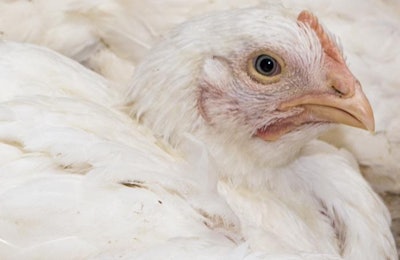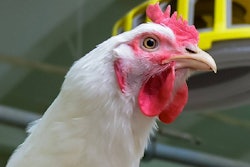
There’s more evidence that modern poultry production practices are good for society at large, but will it matter in the long run?
In November 2017, German scientific consultancy and research firm HFFA Research GmBH published a comprehensive report evaluating the opportunity cost of moving all poultry production to alternative poultry rearing methods that are “extensive” or “organic.”
The study, which analyzed the potential impacts in the European Union and Germany, defined extensive methods as those that: use slow-growing poultry breeds, render less efficient feed conversion than conventional practices and require more space per head. Organic poultry is defined as meeting the EU’s minimum requirements for organic production and labeling.
As a study conducted by the National Chicken Council and Elanco concluded earlier in 2017, it’s not a pretty picture. The report said both extensive and organic production methods are less resource efficient and lead to increased costs and, ultimately, income losses for farmers. Meat produced under extensive practices will be 25 percent to 30 percent more expensive than conventional meat. Organic meat would be “considerably more than 100 percent” more expensive.
Due to those impacts, the EU’s agricultural incomes would drop by about EUR3 billion in the extensive scenario and by about EUR8 billion. Additionally, the birds raised in extensive or organic settings will ultimately consume more resources than conventional birds. The study goes so far as to suggest the switch would harm global biodiversity and lead to more expulsion of carbon dioxide, a greenhouse gas linked to climate change.
This research, reaching this conclusion, is ultimately a positive for an industry that’s already starting to grapple with animal activist-led groups looking to throttle back broiler growth rates. However, as someone who’s covered the egg industry in the recent past, my gut reaction is that the science may not matter in the long run.
The people and companies making the commitments to the Global Animal Partnership, or GAP, standards as well as other welfare systems may not know the science and may not care to learn. In past decisions – according to the people who made them – the most important factor has been what consumers think and how they feel about a given issue.
As was the case with those who made cage-free pledges or vowed to go antibiotic-free, the science wasn’t the defining factor. The consumer’s attitude and perception was.
Knowing this, 2018 should be a key year for the food industry to decide whether it wants to draw a line in the sand on slow-growing birds. If the industry presents convincing, scientific evidence in a way that influences both the consumer and the corporate decision makers, then there is potential the industry can hold the line against the emerging slow-growing movement.

















